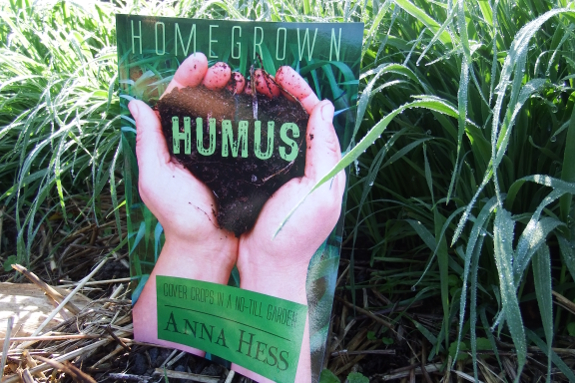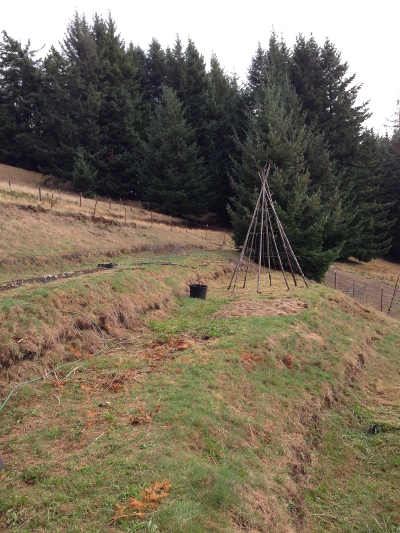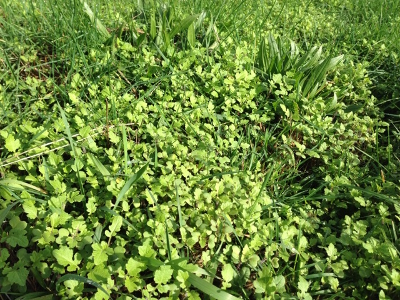
Cover cropping in the Pacific Northwest

I've been hoarding
a couple of cover-crop experiments, planning to include them in a revamped
version of Homegrown Humus. But, on rereading, I decided that the
simplicity of the existing ebook will make it easier for new gardeners
to dive into cover cropping. So, I set the current words in stone by
turning them into a print book (it's new and cheap ---
check it out!) and will be sharing those additional experiments here on
the blog instead.
 The first of my off-farm experimenters was
Charity, who homesteads in zone 9 along the coast of Oregon. At the
time she was experimenting (18 months ago), her garden consisted of
weeds rather than bare soil, so she embarked on what basically
consisted of modified pasture cropping --- mowing the grass down
close to the soil, broadcasting cover-crop seeds, then raked the seeds
into the top of the soil as best she could before waiting to see what
would grow.
The first of my off-farm experimenters was
Charity, who homesteads in zone 9 along the coast of Oregon. At the
time she was experimenting (18 months ago), her garden consisted of
weeds rather than bare soil, so she embarked on what basically
consisted of modified pasture cropping --- mowing the grass down
close to the soil, broadcasting cover-crop seeds, then raked the seeds
into the top of the soil as best she could before waiting to see what
would grow.
Unsurprisingly given
those tough growing conditions, Charity saw a lot of problems with
establishment and growth. The soil was very dry when she planted and
nothing sprouted for a couple of weeks until the first fall rains came
to call. By that point, rodents and birds had done a number on the
seeds (especially the oats), so her stands were moderately to very
patchy.
 Nevertheless, Charity was able
to pick out a few winners that did well despite the initial germination
issues combined with low soil fertility. Barley, fava
beans, and white mustard all made the cut to be tried again, with
the last being handy for early-spring planting since plants bloomed and
were ready to mow-kill early in the spring season.
Nevertheless, Charity was able
to pick out a few winners that did well despite the initial germination
issues combined with low soil fertility. Barley, fava
beans, and white mustard all made the cut to be tried again, with
the last being handy for early-spring planting since plants bloomed and
were ready to mow-kill early in the spring season.
Thanks for sharing,
Charity! Hopefully other gardeners in the Pacific Northwest and
elsewhere will get some ideas from your well-recorded experiments.
Want more in-depth information? Browse through our books.
Or explore more posts by date or by subject.
About us: Anna Hess and Mark Hamilton spent over a decade living self-sufficiently in the mountains of Virginia before moving north to start over from scratch in the foothills of Ohio. They've experimented with permaculture, no-till gardening, trailersteading, home-based microbusinesses and much more, writing about their adventures in both blogs and books.
Want to be notified when new comments are posted on this page? Click on the RSS button after you add a comment to subscribe to the comment feed, or simply check the box beside "email replies to me" while writing your comment.
